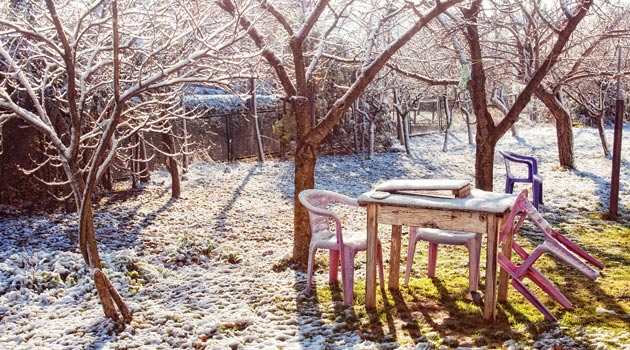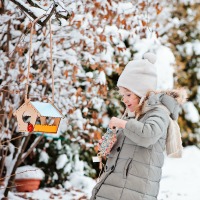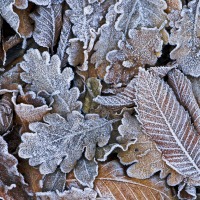
Winter gardening jobs
Here's a quick and not-very-dirty guide to gardening jobs in winter. It may look as though everything in the garden is at rest, but there are already many signs of growth as spring approaches. You can print off this check list of jobs to do and pin it up somewhere as a guide for the winter tasks ahead.

Looking after your soil
If you haven't broken the soil into lovely clods in the months before winter, don't try to do it now as the frost will make it very difficult. The temperature for the next few months will be bumping along the lower limits (4°C and below). The soil will also be super-saturated after the rain and won't benefit from more air being squashed out of it by treading and compaction.
The best guideline for the winter season is to refrain from treading on the ground as much as possible and to tread lightly when you do have to do any work.
Structures and pergolas
This is an excellent time to check the insulation in the greenhouse and conservatory: any problems will be all too evident. Wooden structures in the garden can be repaired easily at this time too, particularly as any dead climbing material can be easily cut away.
Garden clearance
It's important to remove any fallen branches, sticks and debris from beds, paths and lawns. Remember also to clear away any material affected by the winter wet to ensure it doesn’t cause damp problems to any underlying plants. Most perennial borders and grasses can be cut back completely by the end of February and this is also the ideal time to clear old hellebore leaves to show off the new flowers. Unwanted shrubs can be disposed of and space cleared in the garden for the next season.
Servicing
Winter presents an excellent time to check and overhaul your gardening clothes! You may need some new gloves or to repair the stitching on your favourite gardening pants or to oil your gardening boots. Blunt tools are bad for plants because they increase susceptibility to diseases, as well as making your work much harder. A good tool sharpener will make quick work of improving the sharpness of your blades, in particular your secateurs. You should clean and oil your tools to prevent the spread of diseases and service the lawn mower for the work in early spring.
Pruning
This is the time to complete the winter pruning of fruit trees, deciduous hedges, roses and shrubs. Wisterias will benefit from a late prune - you want two or three buds on the current season’s growth
Lawns
Sites can be prepared in late winter for new lawns and turfs can be laid from late January onwards. This is an excellent time to spot the drainage problems in lawns and consider how to improve them.
Planting
Continue to plant bare rooted stock including hedges and roses. If soil is sticky and wet or frosted or
under snow, they can be simply heeled in. You can sow peas and broad beans in pots under cover.
Feeding
Apple trees, and particularly those grown in grass, will benefit from a late winter feed. A potassium-rich general fertiliser will do the trick.
Lastly
"The snowdrops are in flower; and Hamamelis with yellow stars is in flower, and hellebore has fat buds; and when you look properly (but you must hold your breath) you will find buds and sprouts on almost everything; with a thousand tiny pulses life rises from the soil. Now we gardeners will stick to it; already we are rushing into sap." The Gardener's Year - Karel Capek
Images: Shutterstock

